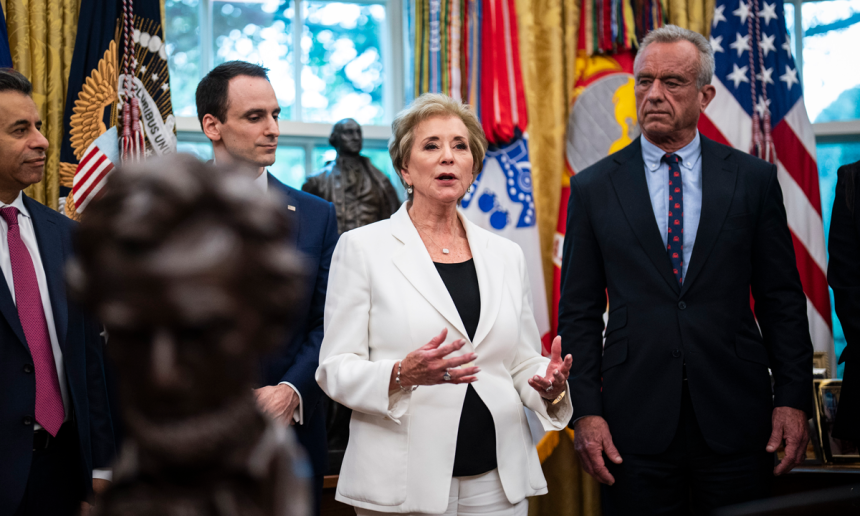This week our national leaders decided that education isn’t something that the United States government needs to care about, let alone nourish and strengthen. The Trump administration decided to cut up the U.S. Department of Education, toss various parts into various buckets and cede its obligations to ensure that children and families in our country can gain access to good teachers and schools.
Do we really need to worry about elementary and secondary schools anyway? They can simply get tossed into the Department of Labor. Those who work on special education? Plop them over there in Health and Human Services.
In this vision of dismemberment, the word “education” is scrubbed from any U.S.-led effort to improve our country. The concept of teaching and learning is not important enough to garner federal attention anymore.
Get stories like this delivered straight to your inbox. Sign up for The 74 Newsletter
Instead, it’s about kids envisioned as workers, with a little bit of health care sprinkled in to make sure their bodies can do the work needed once they grow into adults. This not only acts against Congressional will and statute, it is disastrous for America’s competitiveness and our standing in the world. It is disrespectful to America’s families. And it is catastrophic for our kids and the generation behind them.
Today’s students are facing a future that demands new wells of knowledge, skills and ingenuity to address the unknowns of an AI-infused and climate-changed world. Today’s parents worry that their children will never get the education they need to compete with AI, get good jobs and feel fulfilled in their work. Many of today’s teachers are coping with classrooms of children experiencing fear and trauma while also under pressure to use new technologies and become AI-literate as soon as possible.
White House Splinters Education Department, Sending K-12 Programs to Labor
Take reading. We have all heard how so many of today’s children are struggling to achieve proficiency in reading, as scores on the National Assessment of Educational Progress are in troubling decline. In an AI-driven world, schools need to help students overcome these reading challenges and build traditional literacy skills and powers of comprehension. And they need to help students acquire digital literacy skills so they can not only read what ChatGPT spits out but also know how to vet it.
This is a combination that only comes with well-prepared teachers given training and resources to support students at different levels, with different needs. This is not about sitting kids at a desk and telling them to read “Hop on Pop” so they someday can read instructions for a low-wage job.
To say that states can do it all on their own is folly. Imagine 50 states with 50 different agencies, many of which are held together by small numbers of people, all trying to manage thousands of school districts without guidance. District and state leaders need and want help to apply best practices for funding early literacy specialists in districts, helping English learners read and respond to complex texts, responding to parent inquiries and protecting students’ rights.
There are now decades of scientific research — much of it led by great American minds — on what it takes to build school, home and informal learning environments that engage kids and spark learning. Educators are eager to learn effective strategies for stimulating the deeper thinking that comes with a quality education and is needed to succeed in a complicated world. Other countries, from China to Germany to Paraguay, are using that research on effective teaching and learning to equip their young people for the challenges ahead. The U.S. should be leading in education, not ceding ground.
The materials distributed in the Department of Education’s press release Tuesday talk about “interagency agreements” as if this is as easy as moving someone to a new cubicle. The truth is anything but, and the cost and inefficiencies across funding streams, accountability and new workloads are easy to see.
It is not hard to predict chaos and confusion for the next several years as government officials try to figure out how these interagency agreements will work. That is time that should be used instead to strengthen our education system and help states and localities with all the guidance and assistance and funding they need. That is time to ensure that we aren’t leaving out students who may happen to have a disability, who have been discriminated against, or who happen to live in a low-income school district.
Think about it: Do we really want to be a country without a Department of Education in the 21st century?









